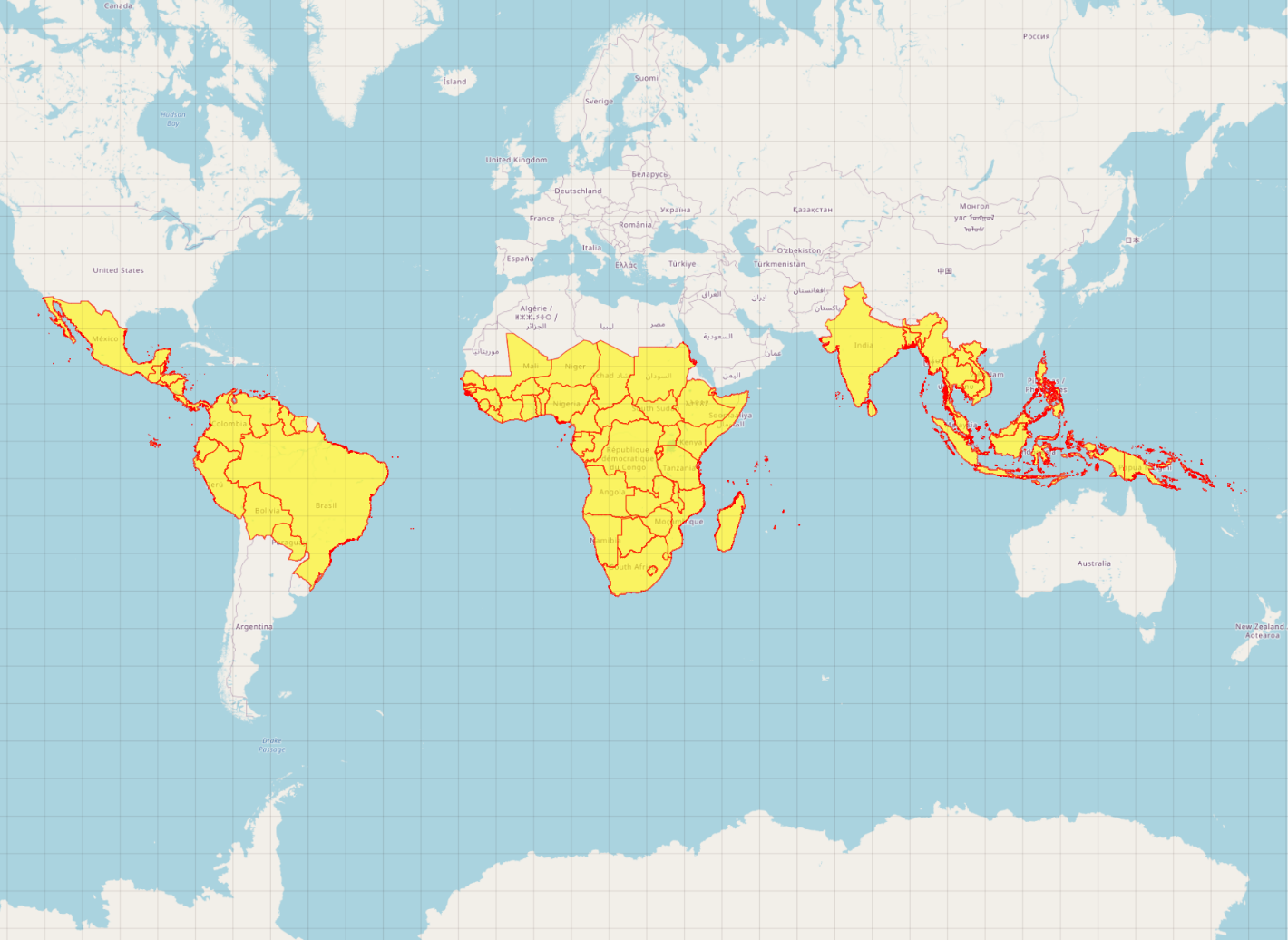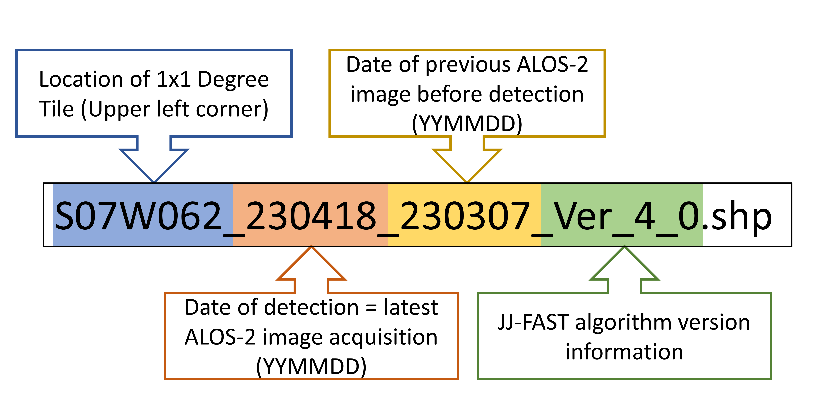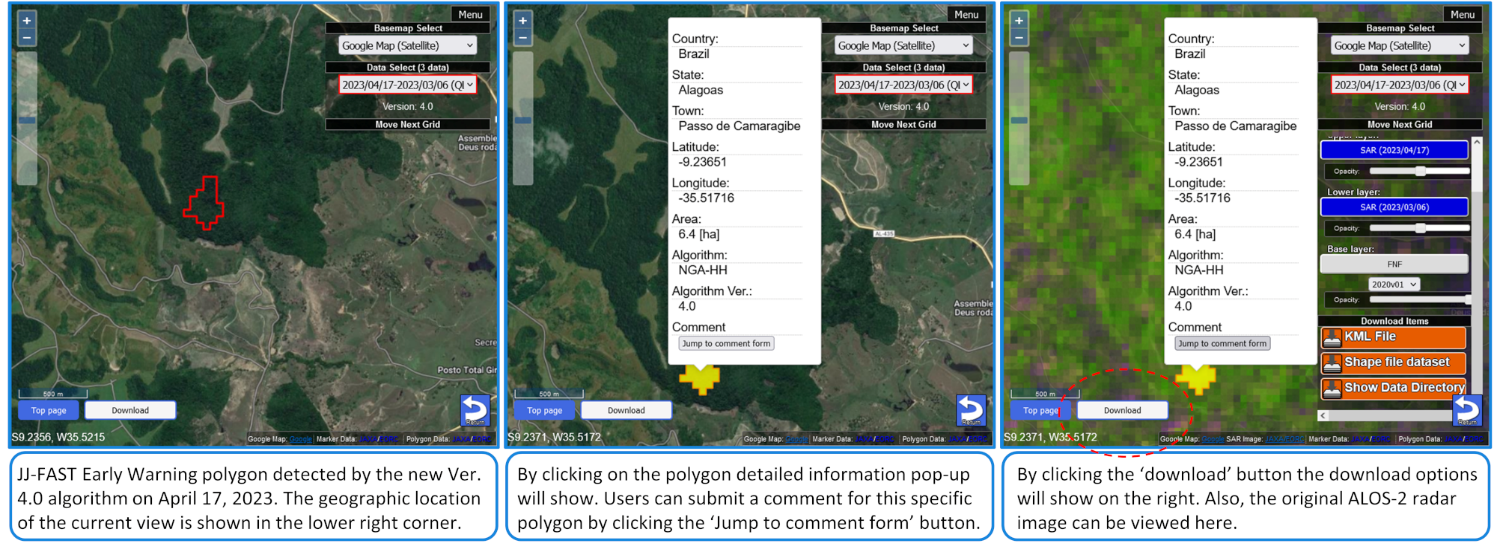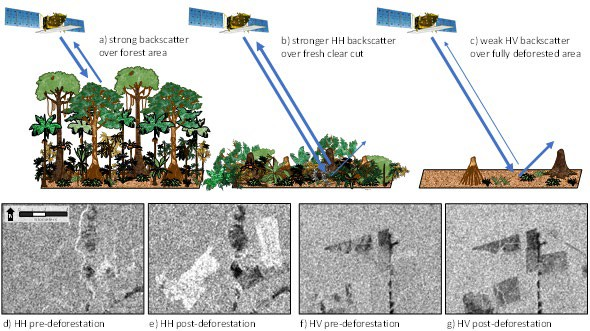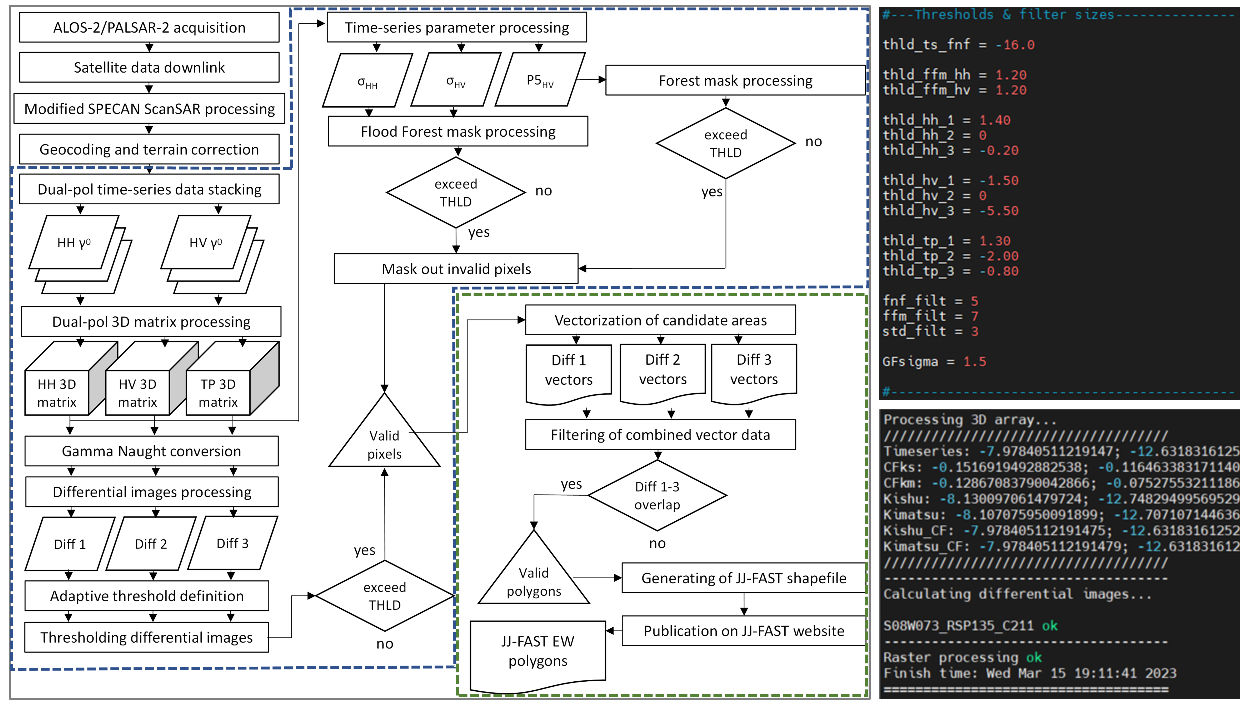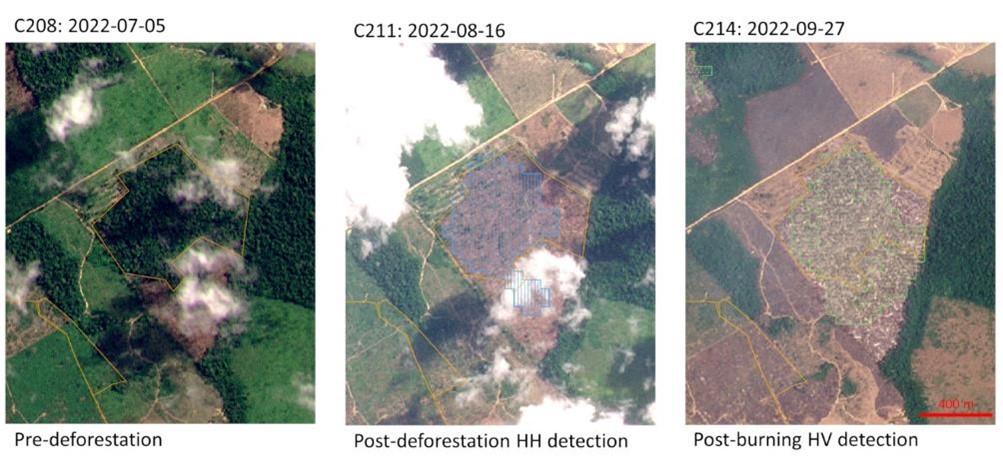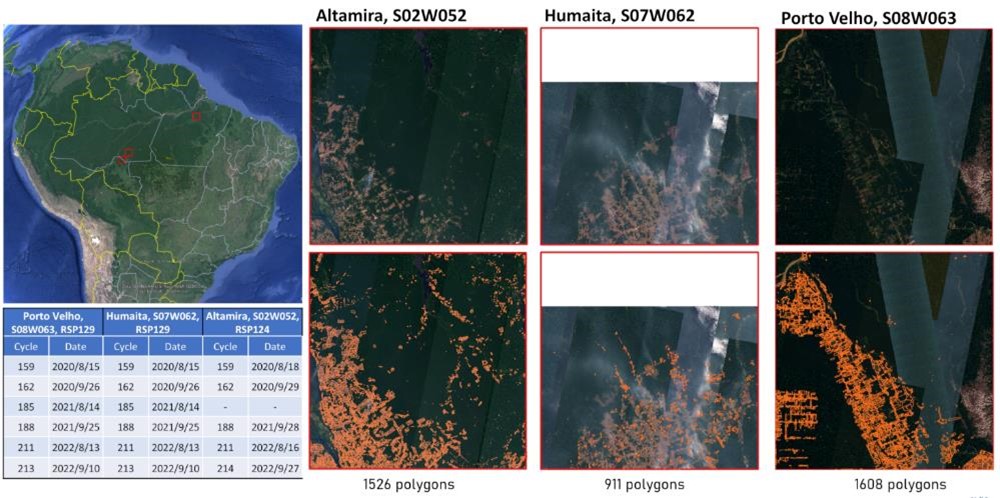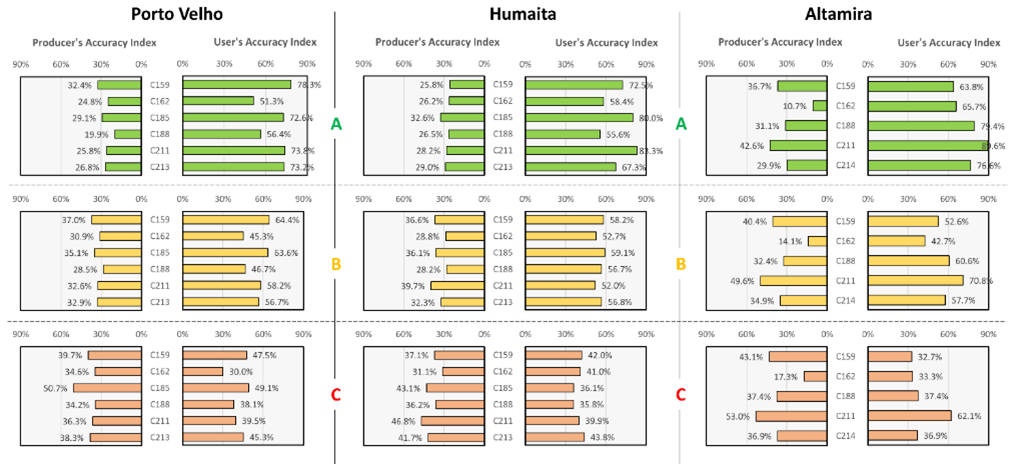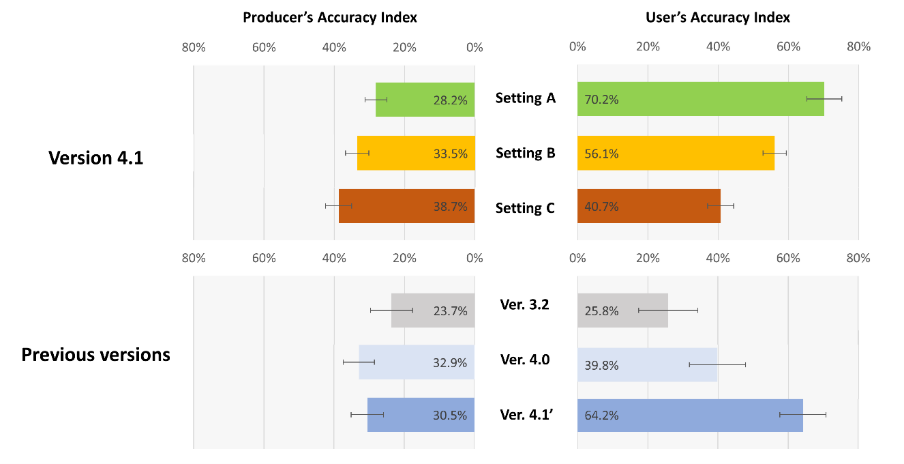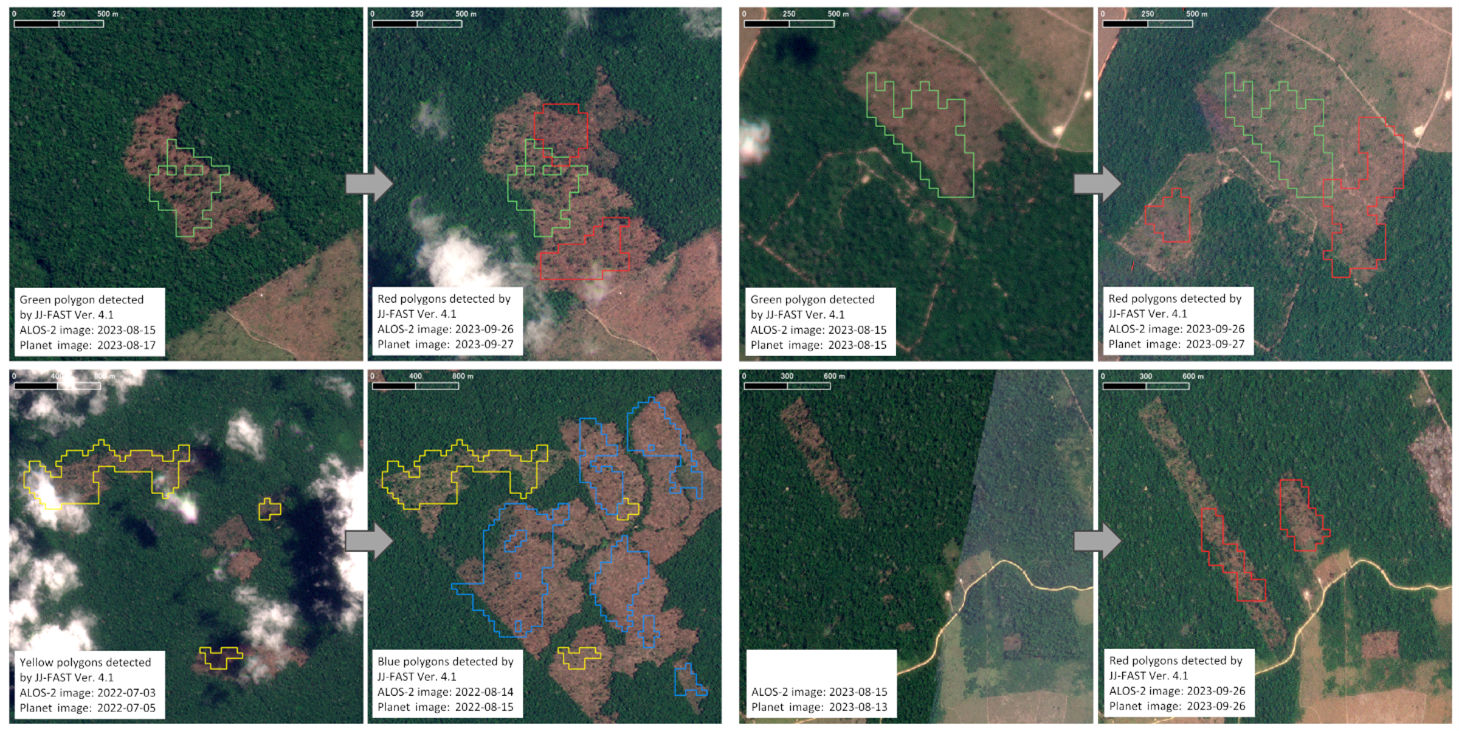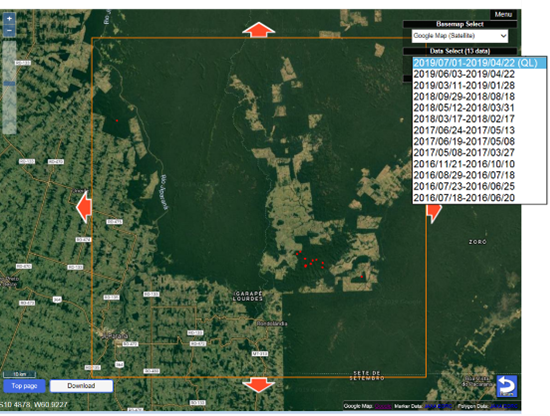■Conference proceedings
Watanabe, M. et al. (2016): Examination of a method of early deforestation detection (advanced) using PALSAR-2/ScanSAR for JICA-JAXA Forest Early Warning System in the Tropics (JJ-FAST). Journal of the Remote Sensing Society of Japan, 61, p. 21.
Ogawa, T. et al. (2016): Examination of a method of extracting changes and the results of a prototype production in JICA-JAXA Forest Early Warning System in the Tropics (JJ-FAST). Journal of the Remote Sensing Society of Japan, 61, p. 257.
Koyama, C.N. et al. (2016): Fundamental study on soil moisture variations under vegetation influencing L-band SAR backscatter - implementations for the development of an advanced forest monitoring system. Proc. of 61th Autumn Conference of the Remote Sensing Society of Japan, Nov. 1-2, Niigata, Japan, pp. 145-146.
Hayashi, M. et al. (2017): Deforestation detection using ALOS-2/PALSAR-2 for JICA-JAXA Forest Early Warning System in the Tropics (JJ-FAST). Journal of the Japanese Forest Society, 128 https://www.jstage.jst.go.jp/article/jfsc/128/0/128_44/_article/-char/ja/ (Access in September, 2017)
Hayashi, M. et al. (2017): ALOS-2/PALSAR-2 utilization for deforestation detection in JICA-JAXA Forest Early Warning System in the Tropics (JJ-FAST). International Symposium on Remote Sensing 2017.
Watanabe, M. et al. (2017): Early-stage deforestation areas observed with L-band (PALSAR-2) and C-band (Sentinel-1) SAR. International Symposium on Remote Sensing 2017.
Watanabe, M. et al. (2017): Examination the 3rd of early deforestation detection method (advanced) using PALSAR-2/ScanSAR for JICA-JAXA Forest Early Warning System in the Tropics (JJ-FAST). Results of time-sequential analysis in South America -. JpGU-AGU Joint Meeting 2017. https://confit.atlas.jp/guide/event/jpguagu2017/subject/STT57-06/date?cryptoId= (Access in September, 2017)
Hayashi, M. et al. (2017): Deforestation detection using ALOS-2/PALSAR-2 imagery in JICA-JAXA Forest Early Warning System in the Tropics (JJ-FAST). 31st International Symposium on Space Technology and Science (ISTS).
Watanabe, M. et al. (2017): Development of early-stage deforestation detection algorithm (advanced) with palsar-2/scansar for jica-jaxa program (jj-fast). IEEE International Geoscience and Remote Sensing Symposium (IGARSS) 2017.
Watanabe, M. et al. (2017): Polarimetric characteristics of L-band SAR images of early-stage deforestation areas. IEEE International Geoscience and Remote Sensing Symposium (IGARSS) 2017.
Koyama, C.N. et al. (2017): The Effect of Precipitation and Soil Moisture Variations on (Partial) Polarimetric L-band SAR Backscatter in Tropical Forest regions. Proc. of IEEE International Geoscience and Remote Sensing Symposium (IGARSS), July 23-28, Fort Worth, USA, pp. 2719-2722.
Koyama, C.N. et al. (2018): Tropical forest classification based on multi-temporal ALOS-2/PALSAR-2 ScanSAR observations. Proc. of 65th Autumn Conference of the Remote Sensing Society of Japan, pp. 51-52.
Watanabe, M. et al. (2019): Improvement of Deforestation Detection Algorithms used in JJ-FAST, IEEE International Geoscience and Remote Sensing Symposium (IGARSS) 2019
Koyama, C.N. et al. (2019): Mapping Spatial-Temporal Forest Heterogeneity in the Tropical Belt by ALOS-2/PALSAR-2 Big Data Analysis, IEEE International Geoscience and Remote Sensing Symposium (IGARSS) 2019
Nagatani, I. et al. (2019): Pixel-Based Deforestation Detection Algorithm for ALOS-2/PALSAR-2, IEEE International Geoscience and Remote Sensing Symposium (IGARSS) 2019, July 28 - August 2, Yokohama, Japan, pp. 5332-5335.
Nagatani, I. et al. (2020): Seasonal Change Analysis for ALOS-2 PALSAR-2 Deforestation Detection, IEEE International Geoscience and Remote Sensing Symposium (IGARSS) 2020, September 26 - October 2, Virtual Event, pp. 3807-3810.
Watanabe, M. et al. (2020): Trial of Deforestation Detection by Using 25m Resolution PALSAR-2/ScanSAR Data, IEEE International Geoscience and Remote Sensing Symposium (IGARSS) 2020, September 26 - October 2, Virtual Event, pp. 3784-3787.
Koyama, C.N. et al. (2020): Rainfall-Induced Changes in L-Band Backscatter Over Tropical Forests and Their Impact on Deforestation Monitoring, IEEE International Geoscience and Remote Sensing Symposium (IGARSS) 2020, September 26 - October 2, Virtual Event, pp. 3799-3802.
Koyama, C.N. et al. (2021): Improving L-Band SAR Forest Monitoring by Big Data Deep Learning Based on ALOS-2 5 Years Pan-Tropical Observations, IEEE International Geoscience and Remote Sensing Symposium (IGARSS) 2019, July 12 - 16, Virtual Event, pp. 6747-6500.
Watanabe, M. et al. (2021): Trial of Detection Accuracy Improvement for JJ-FAST Deforestation Detection Algorithm Using Deep Learning, IEEE International Geoscience and Remote Sensing Symposium (IGARSS) 2019, July 12 - 16, Virtual Event, pp. 2911-2914.
Koyama, C.N. et al. (2021): Assessing the Impact of Precipitation on L-band SAR Forest Observation: An ALOS-2 Big Data Case Study in the Tropics, 13th European Conference on Synthetic Aperture Radar (EUSAR 2021), March 28 - April 1, Virtual Event, 2021, pp. 1-6.
Koyama, C.N. et al. (2021): Long-Term Pantropical Forest Monitoring with ALOS-2 L-Band SAR, 7th Asia-Pacific Conference on Synthetic Aperture Radar (APSAR 2021), November 1 - 3, Virtual Event, pp. 1-5.
Koyama, C.N. et al. (2022): ALOS-2 - The Pioneer Mission for L-band SAR Long-term Pantropical Forest Monitoring, 33rd International Symposium on Space Technology (ISTS 2022), February 28 - March 4, Virtual Event, pp. 1-6.
Koyama, C.N. et al. (2022): Advancements in global forest monitoring research founded on ALOS-2 long-term pantropical land observation, IGARSS 2022, Online, July 17-22, pp. 4445-4448.
Koyama, C.N. et al. (2022): ALOS-2/PALSAR-2 Long-term Pantropical Observation - A Paradigm Shift in Global Forest Monitoring, EUSAR 2022, Leipzig, Germany, July 25-27, pp. 116-120.
Koyama, C.N. et al. (2022): Extending JAXA's long-term L-band SAR forest observation legacy with ALOS-4/PALSAR-3, SPIE Sensors & Imaging, Berlin, Germany, Sept 5-8, 1226408.
Koyama, C.N. et al. (2022): Next-generation L-band SAR deforestation algorithm for highly-accurate operational early warning in tropical forests, Proc. of 73rd Autumn Conference of the Remote Sensing Society of Japan, Nov 29-30, pp. 1-4.
Koyama, C.N., et al. (2023): ALOS-2’s Contributions to Sustainable Development Goals – Making Operational Early Warning and Near Real-Time Forest Loss Assessment a Reality Today, 34th International Symposium on Space Technology (ISTS 2023), June 3-9, Kurume, Japan, pp. 1-5.
Koyama, C.N., et al. (2023): Next-generation L-band SAR deforestation detection for operational forest early warning in the tropics, IGARSS 2023, July 16-21, Pasadena, USA, pp. 2633–2636.
Koyama, C.N., et al. (2023): Achievements of the ALOS-2 L-band SAR long-term pantropical forest monitoring mission, IGARSS 2023, July 16-21, Pasadena, USA, pp. 1994–1997.
Koyama, C.N., et al. (2023): From ALOS-2 to ALOS-4: Japan's pioneering L-band SARs for global vegetation monitoring - state-of-the-art and future perspectives, SPIE Sensors & Imaging 2023, Sep 3-6, Amsterdam, The Netherlands, 1226408.

